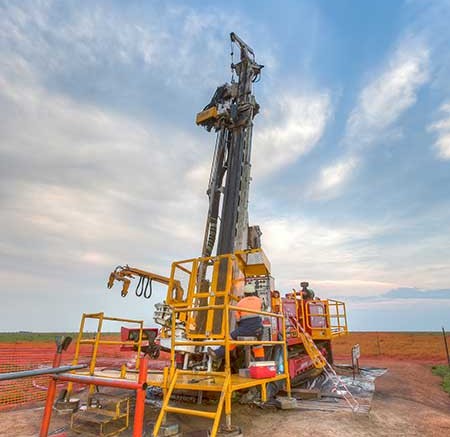VANCOUVER — For the second time in just over a decade, Ivanhoe Mines (TSX: IVN; US-OTC: IVPAF) is taking home the Thayer Lindsley Award, presented by the Prospectors & Developers Association of Canada at their conference in Toronto in March. The award, which Ivanhoe last picked up for its Oyu Tolgoi copper-gold discovery in Mongolia, is given to individuals or teams credited with the best mineral discovery anywhere in the world.
This year, the nod is being given to Ivanhoe’s Kamoa discovery team for finding Africa’s highest-grade sediment-hosted copper deposit, 25 km west of the town of Kolwezi in the southeastern Katanga province of the Democratic Republic of the Congo (DRC).
The group has been headed by copper expert David Broughton, vice-president of exploration of Ivanhoe Mines, and Thomas Rogers, director of exploration with African Mining Consultants.
In a book on exploration he published in 1966, renowned mine-finder Thayer Lindsley says that “to be a successful mine finder, one must have determination, knowledge, tenacity, a rugged constitution to withstand the rigours of outdoor life and enjoy overcoming obstacles of every description. Also, a little dash of imagination and enthusiasm helps.”
And now having assembled three world-class deposits — Kamoa and the Kipushi zinc project in the DRC’s portion of the Central African Copperbelt, and the Platreef platinum group metals project in South Africa — under one corporate roof, Ivanhoe Mines and its exploration team in Africa undoubtedly fit Lindsley’s criteria.
The Kamoa deposit doesn’t sit in isolation. Straddling the border between Zambia and the southern DRC is a belt of Neoproterozoic sediments that is littered with stratiform copper deposits, such as the famous Kolwezi deposits and Freeport-McMoRan’s Tenke-Fungurume mine.
This metallogenic belt received its endowment in the Neoproterozoic, when migrating, oxidizing and copper-bearing brines reduced along favourable sedimentary horizons. For most of the deposits in Katanga, this ideal trap occurs within the mine’s sub-member of the Roan formation.
So with a little imagination and a whole lot of knowledge, the team investigated the potential for mineralization outside the established Roan and considered a prospective reduction-oxidation boundary at its upper contact with the Lower Kundelungu Formation — a part of the stratigraphy that previous Copperbelt explorers considered barren.
The prospective contact is found largely undercover, but subtle copper-in-soil anomalies at Kamoa were investigated with reverse-circulation drilling in 2008, which established high grades and copper mineralization.
Since then, Ivanhoe has outlined a 20 by 15 km deposit footprint with an astounding indicated resource of 739 million tonnes grading 2.7% copper (43.5 billion lb. copper), and an inferred resource of 227 million tonnes grading 1.96% copper (9.8 billion lb. copper) using a 1% copper cut-off grade.
Kamoa is the first of its kind in the widely explored Copperbelt, though the difference is not wholly within its stratigraphy. Unlike its neighbours, the host rocks are relatively undeformed, and occur in broad domes that dip 15 to 20 degrees on their flanks. There are no carbonates and no widespread silicification, which is typical of Mines subgroup deposits.
Kamoa has since been ranked as the largest undeveloped copper project in the world, boasting grades rarely seen in deposits bigger than 750 million tonnes.
But Ivanhoe’s work is far from done. The current work aims to maximize margins by developing the shallow, high-grade underground resources at Kanoko Sud, and box-cuts are underway for the first twinned decline ramps into the deposit.
The next phase envisions a major mine and mill expansion, including building a smelter to produce blister copper.
A 2013 preliminary economic assessment estimated a US$1.4-billion pre-production capital cost and production at a cash cost of US$1.19 per lb. copper, which would rank Kamoa near the bottom of the global cash-cost curve. Its after-tax net present value is US$2.6 billion at an 8% discount rate, with a 15.3% after-tax internal rate of return.
Under the latest schedule, 326 million tonnes would be mined and milled at average copper grades of 3% over a 30-year mine life, producing 7.8 million tonnes of payable blister copper, plus 500,000 tonnes of payable copper in concentrate in the initial concentrate phase.


Be the first to comment on "Lateral thinking pays off for Ivanhoe at Kamoa"